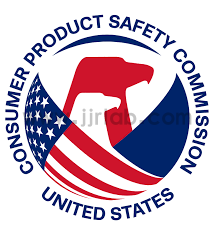
Textile Fabric Testing
What is cpsia?
CPSIA (Consumer Product Safety Improvement Act) is a public law enacted by the U.S. Congress and signed into law by the President in 2008. This law is enforced across all U.S. territories. Products exported to the U.S. must comply with CPSIA requirements, which are mandatory.
The law primarily targets consumer products intended for children aged 12 and under. For textile products, it mandates compliance with lead and phthalate limits set by the act.

What is the CA65 Act?
California Proposition 65, officially known as the Safe Drinking Water and Toxic Enforcement Act of 1986, was voted into law in California in 1986. It requires the state to identify cheMICals known to cause cancer, birth defects, or reproductive harm, and to maintain a list of these chemicals. The list is updated at least once a year, and currently includes more than 900 chemicals.
This act does not ban or restrict the use of these chemicals but emphasizes “right to know.” If a product contains chemicals from the list, a warning must be provided. An example of such a warning label is shown below.
What are the RegULations for Exporting Clothing Care Labels to the U.S. Market?
Clothing care labeling regulations for exports to the U.S. refer to 16 CFR 423, which requires garments to have appropriate care labels firmly attached, providing guidance on how to properly clean and care for the product. To verify if a care label is suitable, laboratories conduct tests such as shrinkage, appearance, chlorine bleach, non-chlorine bleach, etc.
What are the Regulations for Textile Fiber Content Labels for Export to the U.S.?
The regulations for textile fiber content labeling for export to the U.S. are published in Title 16 of the Federal Regulations. The relevant regulations include the following three acts:
1. Wool Products Labeling Act: 16 CFR 300
2. Textile Fiber Products Identification Act: 16 CFR 303
3. Fur Products Labeling Act: 16 CFR 301
These acts define the scope and standards for textile product labeling. All textile products exported to the U.S. must comply with these requirements.
What are the Requirements for Textile Packaging Materials for Export to the U.S.?
The combined concentration of lead, cadmium, mercury, and hexavalent chromium in packaging or packaging components must not exceed 100 mg/kg by weight.
When is a Warning RequiRED on Plastic Bags for Textile Products, and What Should the Warning Say?
If a plastic bag used for packaging textile products has a diameter ≥ 5 inches and a thickness of < 1 mil (0.0254mm), it must have the following warning in English:
WARNING: To avoid danger of suffocation, keep this bag away from babies and children. Do not use in cribs, beds, carriages, or playpens. This bag is not a toy.
What Safety Requirements Should be Considered for Small Decorative Parts on Children’s Clothing Exports to the U.S.?
According to the CPSC (Consumer Product Safety Commission), small parts, sharp points, and sharp edges are not allowed in children's products:
1. Small part: For children’s products intended for children under 36 months, detachable or breakable parts that could be removed or fall off during normal use or abuse testing are prohibited.
2. Sharp point/sharp edge: For children’s products intended for children under 8 years old, sharp points or edges that may be accessible and pose a danger must not be present during normal use or abuse testing.
What Information Should be Included on a Tracking Label for Children’s Products Exported to the U.S.?
A tracking label is a permanent label on the product and its packaging. It should include the manufacturer's name, the product's place of manufacture, and the date of production. Alternatively, a mark or code that traces this information may be used.
JJR Laboratory, China, provides certification testing services for textiles and apparel exported to Europe and the U.S. Feel free to contact us for consultation.
Email:hello@jjrlab.com
Write your message here and send it to us
 WEEE Registration for Waste Electrical &Electr
WEEE Registration for Waste Electrical &Electr
 MSDS Chemical Safety Testing
MSDS Chemical Safety Testing
 What Are the Differences Between UK REACH and EU R
What Are the Differences Between UK REACH and EU R
 E-Cigarette GB 41700 Compliance Testing
E-Cigarette GB 41700 Compliance Testing
 What Are the Testing Items of California Propositi
What Are the Testing Items of California Propositi
 E-Cigarette EU TPD Testing
E-Cigarette EU TPD Testing
 Testing Certification for E-cigarettes Exported to
Testing Certification for E-cigarettes Exported to
 What is Amazon US CPC Certification?
What is Amazon US CPC Certification?
Leave us a message
24-hour online customer service at any time to respond, so that you worry!




